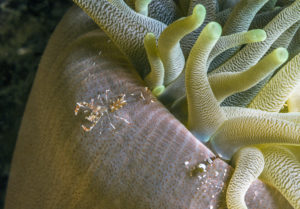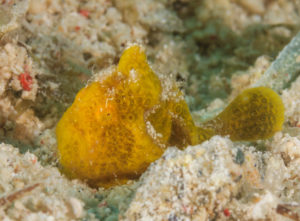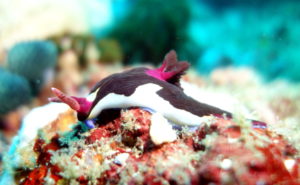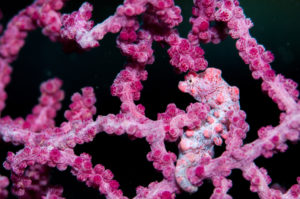Although divers don’t notice many of the ocean’s smallest creatures, these animals are nonetheless just as important to the ocean’s ecosystem. In no particular order, here are our top picks for eight of the smallest animals in the sea.
Marine viruses
We’re starting small — really small. Marine viruses exist just as they do on land, with the tiniest measuring only 40 nanometers in diameter. (One nanometer is one billionth of a meter, just for reference). The largest marine viruses reach up to 400 nanometers, and are still invisible to the human eye without an intense microscope. There are millions of kinds of marine viruses, with various sizes and destructive capabilities.
Marine bacteria
Again, just as on dry land, the seas are home to countless marine bacteria. These are the second smallest organisms in the sea. Larger than marine viruses, many of these bacteria are still tiny at around 1,000 nanometers long. Although they are much larger than marine viruses, they are still invisible to the naked human eye.
Algae
Most of the planet’s smallest plant organisms call the sea home, and many of them are single-celled green algae specimens. They are usually around five times bigger than marine bacteria; about five micrometers (5,000 nanometers). These tiny algae are often prey for larger, yet still small, marine critters.
Dwarf lantern shark
Although it may come as a surprise that a shark is on our list of the ocean’s smallest creatures, many species are actually contenders. The smallest among them is the dwarf lantern shark, with the largest specimen ever measuring only 7.8 inches (20 cm) long.
 Sexy shrimp
Sexy shrimp
Next on our list is the sexy shrimp (Thor Amboinensis). Like frogfish, these flirtatious fellas are a favorite among macro photographers. They can grow to around 1-¼ inch but are usually smaller, depending on their maturity. As their flamboyant nickname suggests, they “dance” in a way that could put most pop stars to shame, wiggling their abdomen back and forth in a suggestive manner. Although tiny, the sexy shrimp boasts a beautiful orange-colored body decorated with white polka dots.
 Juvenile frogfish
Juvenile frogfish
Frogfish get a lot of attention from divers, especially underwater photographers. Ranging in size and color, these fish are so ugly they’re cute. Adult frogfish can vary in size from an inch or two up to almost 12 inches (30 cm). But it’s the babies that have a place on our tiny critter list. Depending on the type of frogfish, some juveniles can be smaller than an inch long, or a few millimeters. It’s notoriously difficult to find these little guys, but the search is worth it.
 Nudibranch
Nudibranch
Varying in color, pattern and size, the nudibranch, a shell-less mollusk, is another diver favorite. There are over 3,000 species of nudis, with more appearing almost daily. They are hermaphrodites and can mate with any mature specimen of their kind to produce offspring. While these colorful creatures can grow up to around 12 inches (30 cm) long, the smallest are less than ¼-inch long (4 mm).
 Pygmy seahorse
Pygmy seahorse
Last but not least is the pygmy seahorse. They are not only one of the smallest seahorse species but also one of the tiniest popular macro photographic subjects. They don’t typically grow to more than an inch long (2.4 cm) long. Depending on their age and species, however, it’s not unusual to find them much smaller. Young pygmy seahorses are often so small (only millimeters in size), that they are virtually invisible to a diver’s eye, especially since they are almost always perfectly camouflaged to match their surroundings.





